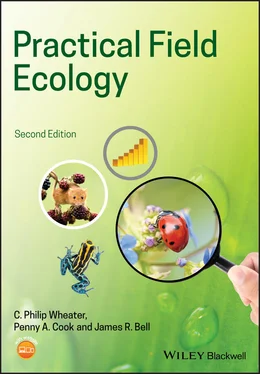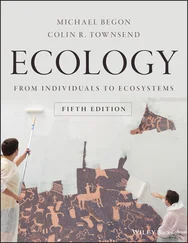1 ...7 8 9 11 12 13 ...22 This is first‐hand information; for example, articles in specialist journals, reports, MSc and PhD theses by those who have done the work and generated data. Journals that publish only refereed papers (i.e. those that have been through a peer‐review process) are the most important sources of primary, up‐to‐date information, and where possible your literature review should focus on this type of source. Other primary sources include technical reports, management plans, consultancy reports, and species lists (e.g. from annual recorder reports). All of these can be useful sources of information for ecological projects, but you should be aware that they may not have been edited or their quality controlled.
This is prepared from other sources of information – including textbooks, review articles, opinion pieces, and letters to the editor – which often express views on primary research. If you are lucky, there may be specialised books covering your subject area. These may provide a good starting point since books are secondary sources of information, while journals are a preferred source of reference for most research projects. The coverage in student textbooks is usually rather more superficial than that in specialist texts. If there are review articles on your subject, these may be useful to obtain an overview and as a source of new references. Reviews are found in edited book sections, journals that specialise in reviews (e.g. Trends in Ecology and Evolution) 3 and journals that have occasional review papers. Review papers in established scientific journals have usually been subject to peer review.
Other sources of information
Maps, personal notes, databases, museum collections, and archives may all contain information that can be useful in supporting your research. There are several software systems used within professional ecology that can be useful for research projects. These can help to set your work into a context grounded in practical conservation issues, as well as supplying data on either a wider spatial or temporal basis. One such package, the Conservation Management System (CMS) software, 4 is used by many countryside managers to produce management plans, whilst Recorder 5 is the software used by the UK National Biodiversity Network 6 to record, manipulate, and map biological records. Note:software is often subject to changes in version and may indeed stop being supported, either by the producers or by computer operating systems, over time.
The best way to locate relevant papers is to systematically search journals using your library's electronic databases using key words. The use of targeted search terms can identify appropriate works and avoid too many articles or irrelevant papers from being selected. First, identify a list of key words or phrases that could be included in the title, abstract, or key words of an article. Begin by using simple combinations of terms (e.g. woodland beetles, hedgerow birds). If you are finding too many papers, then either restrict your search to more recent publications or use more complicated combinations (e.g. by adding ‘predation’ to the key terms ‘woodland beetles’ you can significantly reduce the number of articles returned by a search). Note that most databases allow wildcard entries (e.g. an asterisk) to truncate key works (so that space, spaces, and spatial can all be covered by spa*), although such terms can increase irrelevant returns (e.g. spa* will also cover any word beginning with spa; e.g. Spain, Spanish, etc.). You can use Boolean operators to refine your search and reduce the number of irrelevant works identified. For example, the search ‘woodland beetles’ OR ‘hedgerow birds’ will select those papers which have either ‘woodland beetles’ or ‘hedgerow birds’ in the title, abstract, or key words. Conversely, the search ‘beetles’ AND ‘predation’ will select only papers with both terms in them. Once appropriate papers have been acquired, you can use them to find others of interest in two ways. First, you can examine the literature that the paper cites to see if any older works are relevant. Second, you can use most search engines (e.g. Google Scholar) to identify those works that come after the paper in question and have cited it. If you have access to a librarian, they can help you to set up a search. This search can be saved and re‐run during your project so that you can detect any new papers published whilst you have been carrying out your research.
You will find more source papers than you have time to read. It is easy to get bogged down in the wealth of published material. Keep your subject area in mind and do not read everything indiscriminately. Skim‐read a new reference to decide how much attention it deserves. Start by reading the abstract, skimming the subheadings and then the first paragraph or so of the introduction and the last paragraph of the discussion. Only read in detail those papers that are particularly relevant.
Keep a copy (photocopy, scanned image, or electronic copy) of key references and make notes of (or highlight on photocopies) any useful information. Save the full reference, since all material cited in a research report must be listed in full in the reference list; there are few things as annoying as having to re‐find the details of a reference that you read much earlier. For journals, the full reference includes the authors' names and initials, year, article title, journal title, volume number, and page numbers. For the other types of references, see the guidelines for the reference list in Chapter 6. For books, in addition to noting the authors, publishers etc., take down the library classification number for your own reference in case you need to return to it at a later date. Increasingly, many papers are available online. The level of access depends on the services subscribed to by your organisation. All libraries offer an interlibrary loan service to provide access to works that are difficult to get. When using such a service, note the date on which you request any interlibrary loans to help to keep track of your requests. If you have access to reference management software (such as EndNote, 7 Mendeley, 8 or Zotero 9 ) then it is worth using this since it will make creating your reference list easier when you finalise your report.
Be critical as you read; do not accept everything as true just because it is published. Look at the evidence and decide whether the conclusions are justified, or whether the results could be interpreted differently. It is, unfortunately, not uncommon for assertions to be made with no supporting evidence. You will find that different authors in the same field may disagree. It is particularly important to distinguish opinions and speculation from evidence. You can make your own interpretations and conclusions from the work of others and cite them using expressions such as ‘an alternative explanation for the results of Green and Brown (2010) is that …’. Read critically and keep your use of the information relevant for constructing your own account.
Research, especially field research, can be an unpredictable business. However, with careful thought it should be possible to ensure that most eventualities are covered. Legal and ethical aspects – for example, access rights to land and the impacts on protected species or habitats – should be top of your list of practicalities to consider. Health and safety is another obvious concern and it is essential that you ensure that there is no danger either to you or to those around you through carrying out an appropriate risk assessment. In addition, practical approaches – such as effective time management, efficient data recording and security, and the appropriate use of equipment and techniques – will also help you to deliver a research project successfully.
Читать дальше












